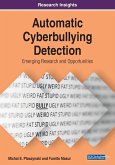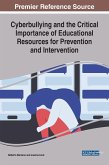Due to the prevalence of social network service and social media, the problem of cyberbullying has risen to the forefront as a major social issue over the last decade. Internet hate, harassment, cyberstalking, cyberbullying-these terms, which were almost unknown 10 years ago-are in the everyday lexicon of all internet users. Unfortunately, it is becoming increasingly difficult to undertake continuous surveillance of websites as new ones are appearing daily. Methods for automatic detection and mitigation for online bullying have become necessary in order to protect the online user experience. Automatic Cyberbullying Detection: Emerging Research and Opportunities provides innovative insights into online bullying and methods of early identification, mitigation, and prevention of harassing speech and activity. Explanations and reasoning for each of these applied methods are provided as well as their pros and cons when applied to the language of online bullying. Also included are some generalizations of cyberbullying as a phenomenon and how to approach the problem from a practical technology-backed point of view. The content within this publication represents the work of deep learning, language modeling, and web mining. It is designed for academicians, social media moderators, IT consultants, programmers, education administrators, researchers, and professionals and covers topics centered on identification methods and mitigation of internet hate and online harassment.








